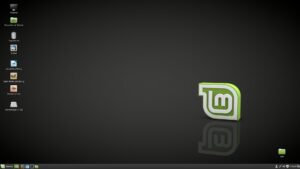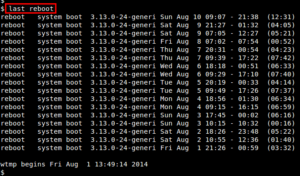When discussing software for mining crypto, you get to choose from a list of software based on Windows and Linux, so which one is better?
There aren’t many options to choose from in Windows, but there are many different operating systems on the Linux side. We’ll go over a few essential aspects to decide which is best for miners.
By the conclusion of this post, we will know which operating system is superior for mining bitcoins, Linux or Windows.
No products found.
A Summary of Windows and Linux
Windows
We have been using Windows for quite a long time now. It is the most commonly used operating system, with most people regularly using it as their preferred platform.
It shouldn’t be surprising that Windows should boast the most satisfactory compatibility levels in terms of hardware and software in any OS ever created.
Windows 11 maintains this legacy with a minimal design, smoother UI, and better driver support than its previous iteration.
Of course, it’s still Windows, and it’s still expensive to buy. But it should not be a significant concern if you’re building one rig, but what if you’re making more than one?
Linux

Linux has established a good reputation as a super software for miners. Its rock-solid dependability and minimal system requirements have been pillars of its expansion.
It has an excellent user interface, but let’s be frank: you’ll hardly use it because all the good things start from the command prompt window.
This software might be challenging for newbies who have never worked with a command-based OS before.
Linux might be the most sensible choice for mining setups because of its ease of use but only for those acquainted.
Which Software is Better In The Long Run?
This department is where Linux gains a significant edge over Windows for mining. For various reasons, just a few of which we will discuss here, Linux is significantly less susceptible to crashes and is more stable than Windows.
Windows 11
Even with excellent reliability and performance enhancements in the current windows, veterans in the crypto game like to play in a Linux-based OS for various reasons.
Windows is pretty frustrating when it concerns how lengthy its update times are.
For instance, whenever Windows starts to function correctly, it continually restarts for updates and security patches. Not to mention that it tends to get stuck now and then.
Windows do not take it easy with its software updates. It will restart your PC for updates as and when needed. Linux has made it apparent that they don’t care about system reliability regarding maintenance.
You will have to restart the system nonetheless.
Windows has made great strides over the past few years. Windows 11 is significantly more reliable than its predecessors. You can prevent restarts and get them done on your desired timetable with a few more registry modifications.
Linux
Linux wins in this department. There are no parallels. One can apply fixes to services and apps in many circumstances without requiring us to reboot the system.
Another factor to consider when deciding between Windows and Linux for mining is that Linux is far less prone to crashes when working with a significant number of Graphic processing units. On the other side, having six or more GPUs will cause Windows to a glitch.
Using Linux lets you discover that you can consistently operate up to 10+ GPUs on one workstation.
Linux For Miners: Coding & Integration

Both OS have fairly powerful coding toolkits. Sequence scripts are pretty straightforward to use in Microsoft, while Linux supports coding software like a batch. Expert users prefer Batch (although you will need a fair amount of practice to get acquainted with Python).
But the good thing is that the Python coder is also available in Linux, along with various other coding software. In this way, Linux serves as a multipurpose apparatus.
Windows
Coding in Windows is as easy as putting your miner’s program in the starting folder.
This feature ensures that your miner begins whenever the user signs in. That’s a handy function, and practically anyone can sort it out regardless of technical ability.
Windows also has various functional programming languages, as well as PowerShell. PowerShell lets you explore and discover a plethora of new features.
PowerShell can suspend the mining process when it detects a game running in the background if your mining equipment and gaming system are on the same machine. This feature is a fantastic addition as well!
Linux
Whenever it comes to the battle between Windows and Linux, Linux gains another point. There appear to be an infinite amount of programming software and alternatives for controlling your mining workstations under Linux.
Things can get confusing for users who have never used code-based operating systems before. If you’re a seasoned Linux user, this may be the primary reason you would want to choose Linux to power your mining duties!
One of the fantastic features of Linux is Crontab. This program runs at specified times. Crontab periodically assesses your mining operation’s state and makes modifications as needed.
Crontab checks if your program is still functioning and monitors the price of cryptocurrencies. It also checks if your investment is gaining profits or incurring losses.
Top 2 Linux-Based OS For Mining
When developing this list, we took a variety of important variables into account, including pricing, performance, dependability, customer support, and much more.
And while we chose our favorites, any of the companies on the list provide excellent services. They might be a suitable fit for your cryptocurrency mining operation.
HiveOS is the ideal cryptocurrency mining and management platform. And its makers are not exaggerating when they say that.
A glance at the HiveOS webpage reveals that this is a reasonably contemporary platform designed to appeal to the public.
The program looks neat and simple, but it is also incredibly user-friendly. You can also pair it with a smartphone companion app that allows you to operate your miners while on the road.
Companion programs like this are relatively uncommon in Linux distributions that concentrate on mining bitcoin.
Installing Hive takes only a few minutes on average, and it supports the majority of contemporary graphic processors.
HiveOS, although being an incredibly high-quality solution, will not cost a fortune. A regular bundle will cost you $5 per month per workstation. However, you may be able to receive even better pricing if you join Hive’s blockchain network.
If you aren’t willing to commit to a subscription right away, don’t fret since you can use HiveOS for free for as long as you like.
There are specific feature restrictions, like the fact that you can only have a total of 2 miners who can only mine particular coins.
2) Rave
RaveOS is somewhat identical to HiveOS in several aspects. People think that it’s a direct competitor in the cryptocurrency software industry. RaveOS, similar to its competition, aims to spread the concept of crypto to the public.
Another resemblance is the smartphone app, which handles most of the same activities as the device, such as remote access, boosting, restarting, etc.
The basic RaveOS installation image is just about 1 GB in size, so you should be able to have a conventional system up and running as quickly as possible.
In terms of cost, there are three different plans that Rave offers. The Enthusiast plan is entirely free and includes all capabilities. However, it can only handle up to three devices.
Meanwhile, the Premium subscription costs $3 per machine per month and includes enhanced client support.
The Professional bundle is the third and final tier. The price varies based on the number of miners and can handle significant operations on at least 250 machines.
Conclusion
Due to rising competition, making a profit from crypto mining is much more complicated than before.
Using only one to three computers is no longer sufficient because many individuals mine on farms made of dozens, if not thousands, of workstations.
Windows was the operating system of choice for mining projects of all kinds in the past. Still, Windows and Linux both have a comparable user base.
Linux delivers several advantages over Windows, including substantially smaller file size, more diversity, superior reliability, and software diversity. One of the best things about Linux is that it’s open-source.
Another principal advantage is the availability of a plethora of Linux distributions created exclusively for miners.
Theoretically, you can mine cryptocurrencies with any Linux-based OS. Still, you’ll get optimal output if you mine using a dedicated mining rig.



